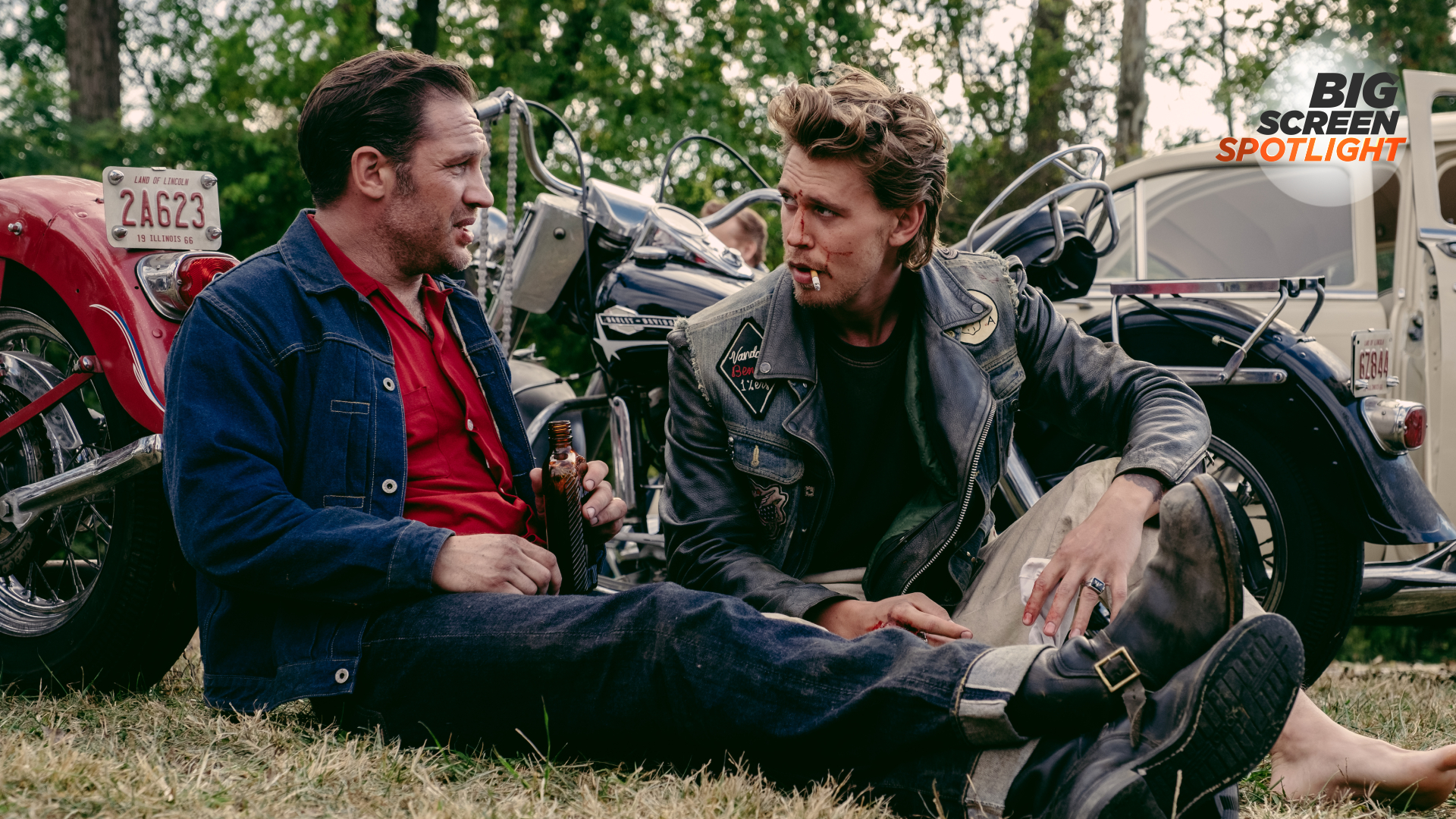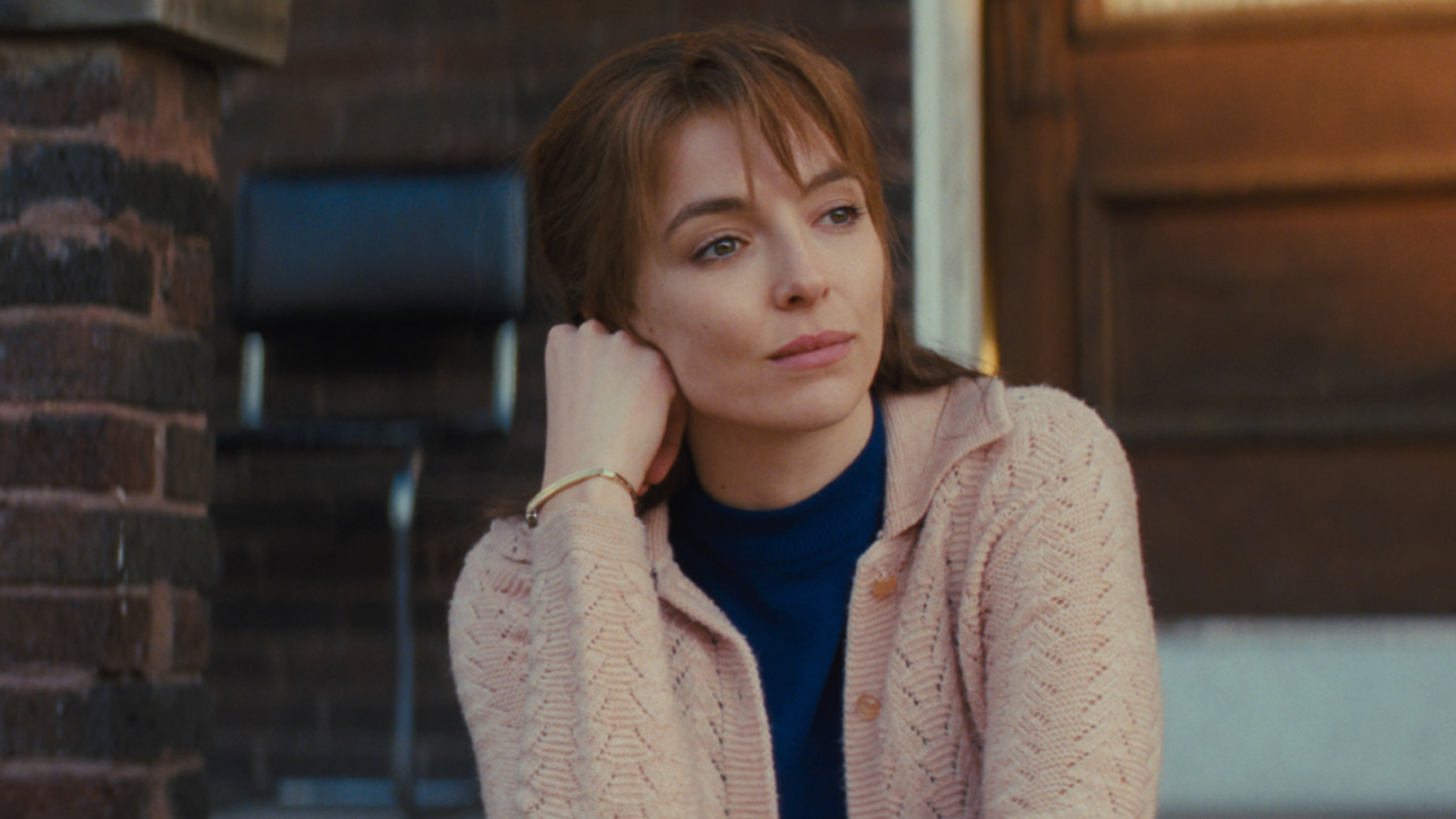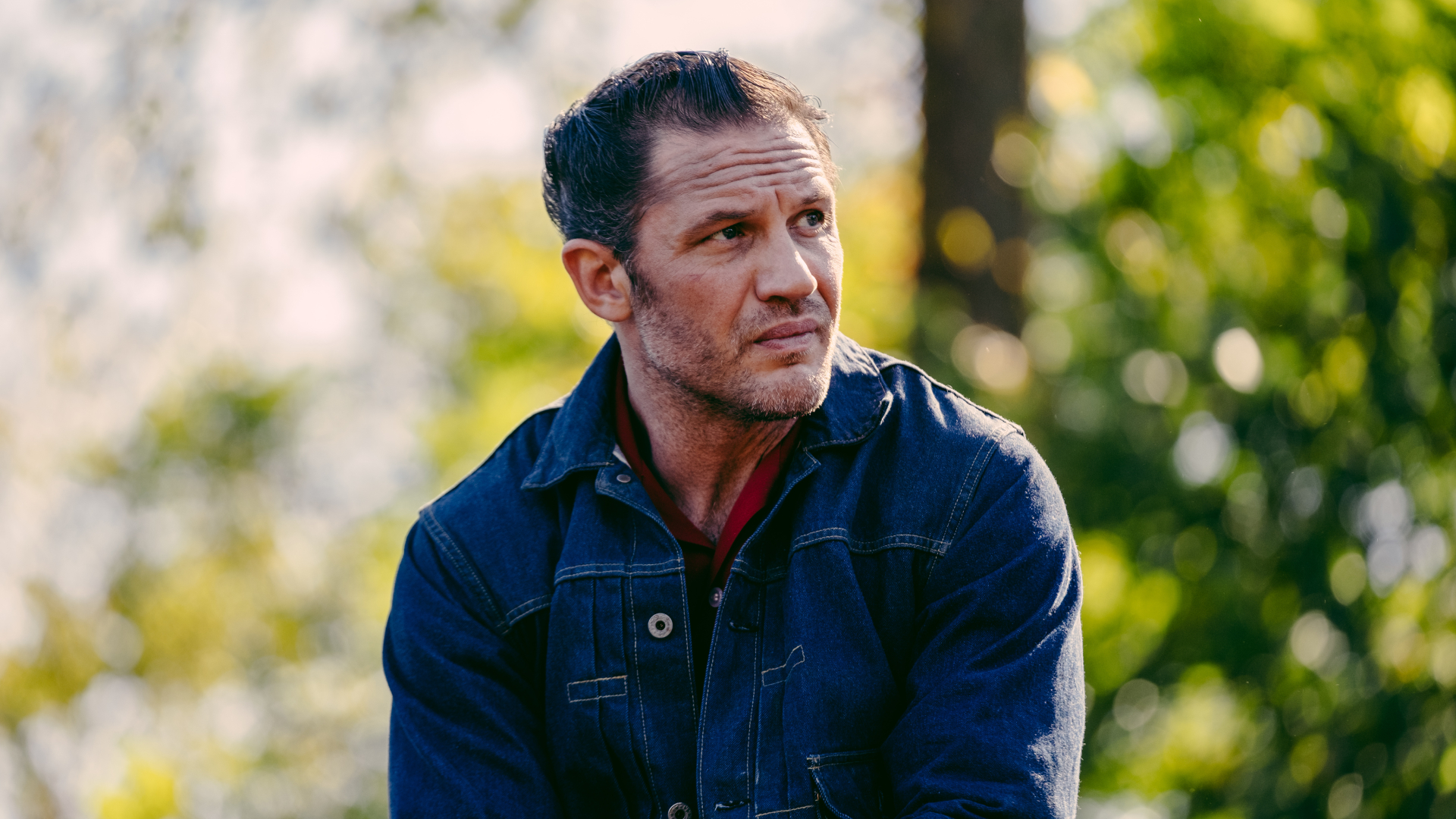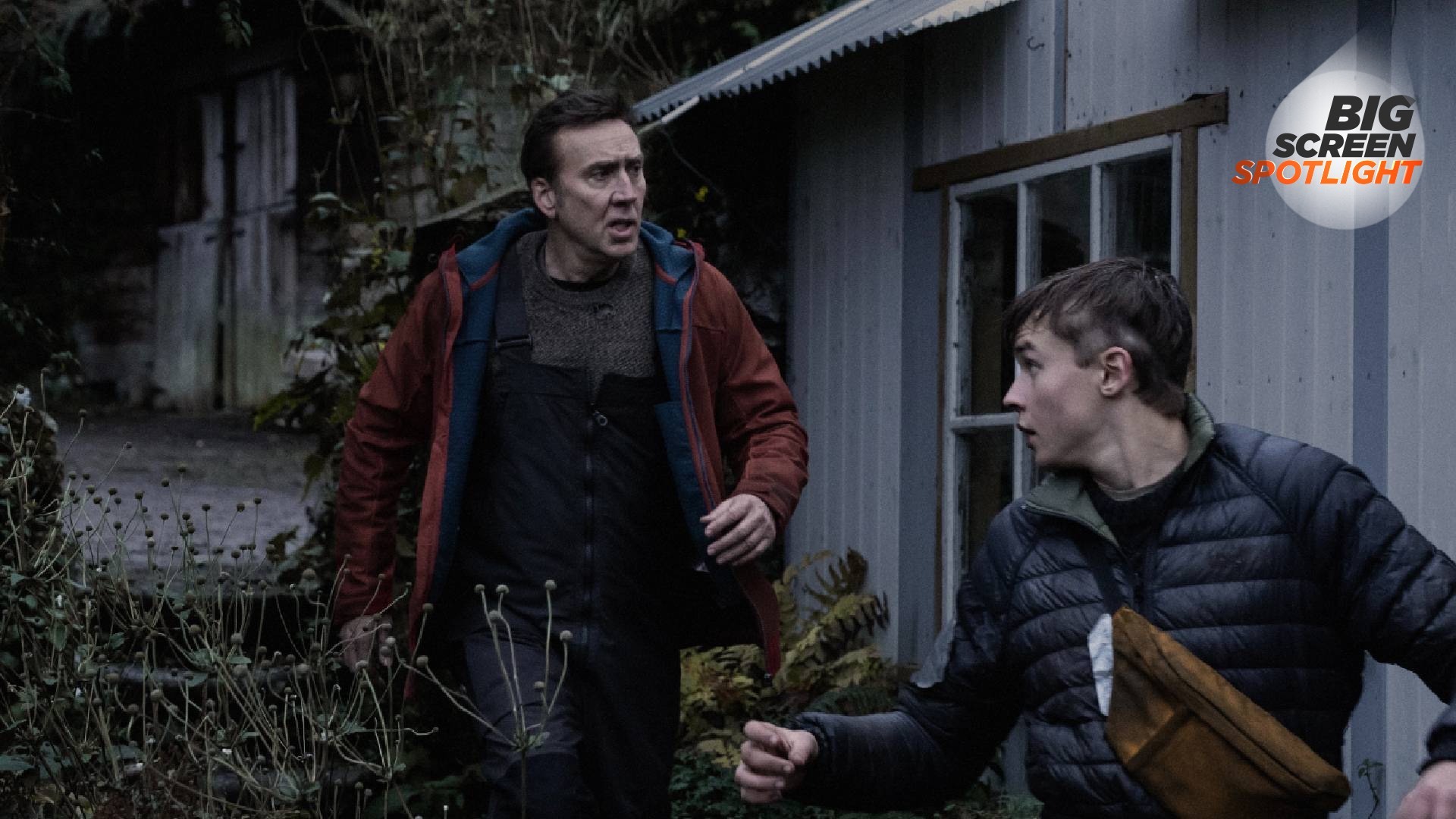Tom Hardy is right: The Bikeriders isn’t your typical biker movie, and that’s the point
Big Screen Spotlight | Clever choices in Jeff Nichols’ new movie The Bikeriders mean it’s much more than your usual biker drama

It’s pretty likely that The Bikeriders is not the film you think it is. Watch the trailer, and you’ll have a pretty set vision of who these characters are. It introduces the Vandals, a biker gang set up by Tom Hardy’s Johnny in the ‘60s who drink, ride out, fight, and "sit around talking about bikes". Set to a soundtrack of The Rolling Stones, you can almost smell the gasoline and cigarette smoke through the screen. In short, they seem pretty bloody cool – and yet, Sons of Anarchy this is not.
Sure, the badass biker jackets, epic motorcycle shots, and Austin Butler being unbearably magnetic as Benny are all in there, but over the space of two hours, director and writer Jeff Nichols presents a group of (mainly) men desperate to be what they’re not. The Bikeriders isn’t about glamorizing the life of a motorcycle gang: in fact, it shows the dangers of a group spiraling out of control.
Shining a light on the under-the-radar theatrical releases that you need to know about, with a new article every Friday
Tom Hardy put it perfectly in a recent interview with Variety. "You look straight away at a biker movie and think, 'Oh, it’s leather. It’s sexy. The music’s great. The hair’s great,'" he told the publication. "The obvious choice is to play to all of these. So the obvious choice for somebody like me is to go to the counterpoint of all those. This guy is a tragic clown."
Just take an early scene where Hardy’s Johnny is watching The Wild One with Marlon Brando. He tries immediately to mimic Johnny Strabler’s mannerisms and tough exterior, and it’s ultimately what inspires him to start his own gang. But instead of being an homage to one of the coolest actors to grace the screen, it all comes across as pretty tragic.
This is a note that Nichols comes back to throughout the film, whether it’s through Hardy’s slightly off-piste accent that the actor says was meant to sound like Bugs Bunny or the Vandals' inability to navigate overt acts of violence as their small group of outsiders balloons into something bigger.
Female gaze

Probably the best way that Nichols tackles this dichotomy, though, is through Jodie Comer’s Kathy, who gets pulled into the orbit of the Vandals through her connection to Butler’s Benny. She’s the only character who instantly sees through all of these men. Her laser-sharp narration offers just the right level of distance to see the hurt they’re causing in the pursuit of being cool, and it’s all the more painful when it becomes clear she’s the one who’ll suffer the most from it.
Placing a female narrator at the center of a film driven by a particular shape of masculinity may not seem like a natural decision, but it was the perfect one to tell this story. Kathy’s lilting, distinctive accent carries us through the origins of the gang right through to its bloody conclusion as she recounts the story to Mike Faist’s Danny.
Bringing all the latest movie news, features, and reviews to your inbox
“I wish I could say it was a high-minded thing,” Nichols recently told the Guardian about casting her as his eyes into this world. “You know, ‘It’s time to have a woman narrate this masculine movie!’ That idea wasn’t lost on me. But the truth was that Kathy is the most interesting voice in the book. She’s self-deprecating, introspective, maddening at times, but also hilarious and sincere. Even though the guys like her, she’s still an outsider because she’s a woman. That makes her the perfect lens through which to view this hyper-masculine situation.”
Yet, whether it’s conscious or not, her reliable perspective elevates the drama from one-note machismo to a more nuanced conversation about masculinity. At no point does she allow you as an audience member to get swept up in the glamor of the Vandals. In fact, even as we watch Kathy fall in love with Benny after spotting him looking like a rockstar across the bar, her narration is always at odds.
“I never felt so out of place in all my life, that’s when I saw him for the first time, he took my breath away,” she recalls of this moment as we watch it play out on screen. It’s romantic, but Kathy is speaking from a future point, and every moment always feels too good to be true, casting a solemn dread over the top of the fun that’s playing out on screen.
Contemporary values

A woman narrating these key events feels pertinent, too, as it allows a degree of separation from the story that makes it all the more contemporary. Yes, this is a film about a biker gang in the ‘60s, but it’s just as much a warning about the danger of peripheral, often male-led fracture groups. The allure is there through every frame of The Bikeriders, but it offers a warning, too.
This is a drama about people longing for identity, and finding it in the camaraderie of a gang. It never offers a clear judgment on its characters, instead allowing them their Brando-style moments of coolness as often as it looks sideways at their actions. Nichols clearly loves his ragtag group, and there’s a lot of admiration woven into this film, which captures a moment in time with care.
However, through Hardy’s performance choices and Kathy’s narrative, Nichols also navigates the responsibility of telling a story like this equally well. The Bikeriders isn’t overt in its messaging, but it deconstructs the idea of a biker movie, while also being an homage to some of the greatest to grace our screen. So whenever you find yourself getting swept up in the alluring cigarette smoke, take a moment to be a bit more Kathy, and see the danger that swirls beneath.
The Bikeriders is out in cinemas now. For more, check out the rest of our Big Screen Spotlight series.

I’m the Deputy Entertainment Editor here at GamesRadar+, covering TV and film for the Total Film and SFX sections online. I previously worked as a Senior Showbiz Reporter and SEO TV reporter at Express Online for three years. I've also written for The Resident magazines and Amateur Photographer, before specializing in entertainment.



